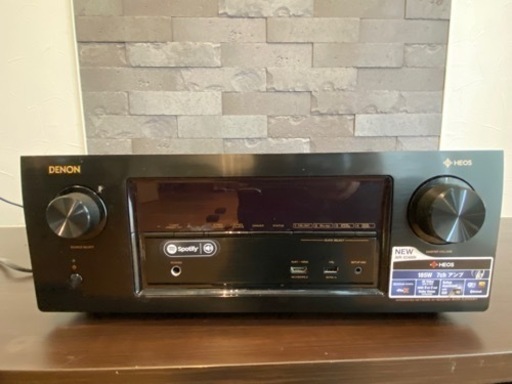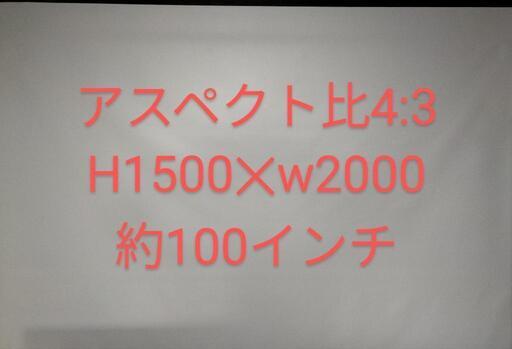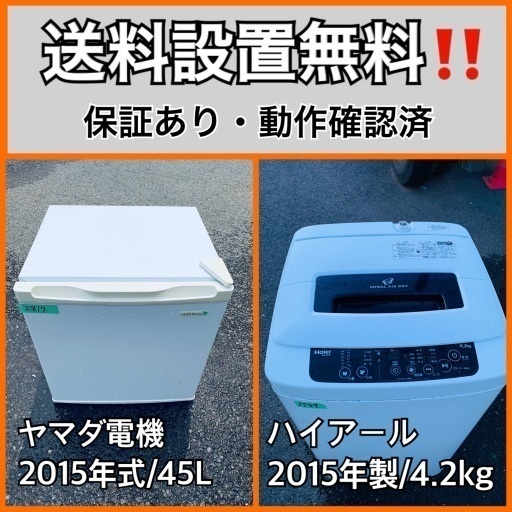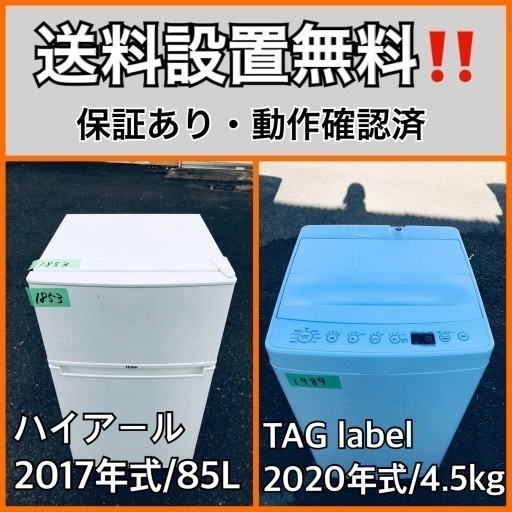0
激安の 【新品・未開封、値下げ❗️】小型プロジェクターYLP-80HD ホワイト プロジェクター、ホームシアター


¥45,000
¥22,500
DENON製 AVアンプ AVR-X2400H

¥10,000
¥7,500
肩掛けプロジェクタースクリーン85インチ

¥38,000
¥20,900
【極美品 付属品完備】Anker nebula capsule ii

¥50,000
¥25,000
【値下げ交渉可能】Ultra-HD 4K ビデオモニタ

¥15,000
¥9,000
⭕️ プロジェクタースクリーン 自立式 100インチワイド 16:9 床置き

¥9,500
¥7,125
【新品】プロジェクター ホームシアター 4K フルHD 5G WiFi 小型 収納バッグ付き 大画面

¥65,000
¥52,000
ポップインアラジンSE・ゲーム機器接続コネクタ 総額8万円以上

¥9,280
¥6,960
小型プロジェクター 4000ml ネイティブ720P

¥22,000
¥13,200
NO.171《お値下げ中!!》EPSON EB-1771W H477D 液晶 ビジネス プロジェクター

¥15,000
¥9,000
プロジェクター

¥13,480
¥8,088
(Android TV 11搭載・180°回転 )プロジェクターX フルHD\u00264K対応 リモコン付属 【未使用・未開封】

¥28,000
¥16,800
【取りに来れる方or着払い】LG社製「超短焦点プロジェクター」

¥8,000
¥6,000
EPSONプロジェクターEB-s02H

¥15,000
¥9,000
プロジェクター LG Minibeam UST 新品未使用品 交渉中

¥6,000
¥5,735
【お譲り先決定しました】100インチプロジェクター スクリーン(中古)

¥9,000
¥6,750
3.1ch ホームシアター 大迫力

¥18,000
¥10,800
送料設置無料❗️業界最安値✨家電2点セット 洗濯機・冷蔵庫181

¥74,382
¥59,506
日立 HITACHI 5ドア冷蔵庫 R-WHS47K 2020年製

¥15,000
¥9,000
※受け付け止めてます【衣類乾燥除湿機】Panasonic F-YC120HUX 21年製

¥25,000
¥15,000
超高年式✨送料設置無料❗️家電2点セット 洗濯機・冷蔵庫 69
激安の 【新品・未開封、値下げ❗️】小型プロジェクターYLP-80HD ホワイト プロジェクター、ホームシアター
激安の 【新品・未開封、値下げ❗️】小型プロジェクターYLP-80HD ホワイト, プロジェクター、ホームシアター - facttoss.com

| 商品コード | 5ad6e0c2d |
|---|---|
| 本体価格 | 6,375円 |
| ポイント |
6ポイント
|
| セブンマイル | セブンマイル対象 マイルについて |
| 送料 | 送料込み(出品者負担) |
お届け予定日
東京都千代田区にお届けする場合
宅配受取り:2023年03月29日(日)~ 2023年10月21日(火)にお届け
お届け・サービスについて
管理タグがついている場合があります。予めご了承ください。ご使用の際に影響はございません。

数量
在庫有り
ご利用可能なサービス
商品説明




プロジェクター
YAMAZENの小型プロジェクター、
Pioneer パイオニア 5.1chホームシアター SA-SWR35
LGサブウーハー付きサウンドバーSL8YG
YLP-80HDです。
【美品★格安】電動プロジェクタスクリーン&設置ポールセット 9万円相当 オシャレ インテリア
ほぼ新品 プロジェクター
小さいながら、最大120インチの投影が可能です。
SONY ホームシアターシステム BOV-N1B
ヤマハ YAMAHA ホームシアター YHT-3067 スピーカーセット
衝動買い致しましたが、今日まで使うことが
中古美品☆DENONホームシアターDHT-300DV 2003年製
ホームシアター スピーカー ヤマハ YHT S350
ありませんでしたのて、お譲り致します(´◡`๑)
ホームシアター HTP-S767
クリスマスセール!プロジェクター スマブラやprime、Huluを大画面で
amazon価格:10,500円(2019/11/1時点)
ONKYOのホームシアターシステム
パイオニアPIONEER ホームシアターサラウンドセット SX-SWR1/S-SWR727
新品・未開封です。
美品 モバイルプロジェクター
プロジェクター EPSON EH-TW400
基本、お手渡しにてお願いしておりますが、
XGIMI MoGo Pro/Halo用スタンドPro
【電動オートフォーカス&Wi-Fiなしでも瞬間ミラーリング】TOPONNY WiFi6 プロジェクター 家庭用 高輝度600ANSI 4K対応 1080PフルHD Bluetooth5.2スピーカー ズーム機能 大画面 小型 天井投影 天井吊りWIFI不要可USB/HDMI/AV端子 スマホ/パソコン/DVDプレヤー/TV Stick接続可能projector 日本語取扱書 清掃キット付属
郵送希望の方は、着払いにて対応致します(๑・̑◡・̑๑)



 YAMAZENの小型プロジェクター、YLP-80HDです。小さいながら、最大120インチの投影が可能です。衝動買い致しましたが、今日まで使うことがありませんでしたのて、お譲り致します(´◡`๑)amazon価格:10,500円(2019/11/1時点)新品・未開封です。基本、お手渡しにてお願いしておりますが、郵送希望の方は、着払いにて対応致します(๑・̑◡・̑๑)
YAMAZENの小型プロジェクター、YLP-80HDです。小さいながら、最大120インチの投影が可能です。衝動買い致しましたが、今日まで使うことがありませんでしたのて、お譲り致します(´◡`๑)amazon価格:10,500円(2019/11/1時点)新品・未開封です。基本、お手渡しにてお願いしておりますが、郵送希望の方は、着払いにて対応致します(๑・̑◡・̑๑)激安の 【新品・未開封、値下げ❗️】小型プロジェクターYLP-80HD ホワイト プロジェクター、ホームシアター
サイト内リンク
商品詳細
| category | プロジェクター、ホームシアター |
|---|---|
| メーカー名 | 5ad6e0c2d 1427 |
<プロジェクター、ホームシアター> 新着商品

¥45,000
¥22,500
DENON製 AVアンプ AVR-X2400H

¥10,000
¥7,500
肩掛けプロジェクタースクリーン85インチ

¥38,000
¥20,900
【極美品 付属品完備】Anker nebula capsule ii

¥50,000
¥25,000
【値下げ交渉可能】Ultra-HD 4K ビデオモニタ

¥15,000
¥9,000
⭕️ プロジェクタースクリーン 自立式 100インチワイド 16:9 床置き

¥9,500
¥7,125
【新品】プロジェクター ホームシアター 4K フルHD 5G WiFi 小型 収納バッグ付き 大画面

¥65,000
¥52,000
ポップインアラジンSE・ゲーム機器接続コネクタ 総額8万円以上

¥9,280
¥6,960
小型プロジェクター 4000ml ネイティブ720P

¥22,000
¥13,200
NO.171《お値下げ中!!》EPSON EB-1771W H477D 液晶 ビジネス プロジェクター

¥15,000
¥9,000
プロジェクター

¥13,480
¥8,088
(Android TV 11搭載・180°回転 )プロジェクターX フルHD\u00264K対応 リモコン付属 【未使用・未開封】

¥28,000
¥16,800
【取りに来れる方or着払い】LG社製「超短焦点プロジェクター」

¥8,000
¥6,000
EPSONプロジェクターEB-s02H

¥15,000
¥9,000
プロジェクター LG Minibeam UST 新品未使用品 交渉中

¥6,000
¥5,735
【お譲り先決定しました】100インチプロジェクター スクリーン(中古)

¥9,000
¥6,750
3.1ch ホームシアター 大迫力

¥18,000
¥10,800
送料設置無料❗️業界最安値✨家電2点セット 洗濯機・冷蔵庫181

¥74,382
¥59,506
日立 HITACHI 5ドア冷蔵庫 R-WHS47K 2020年製

¥15,000
¥9,000
※受け付け止めてます【衣類乾燥除湿機】Panasonic F-YC120HUX 21年製

¥25,000
¥15,000
超高年式✨送料設置無料❗️家電2点セット 洗濯機・冷蔵庫 69
商品の注文
Copyright © facttoss.com. All Rights Reserved.



